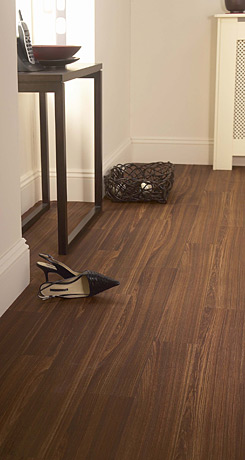Sheet Vinyl
Routine Maintenance
Sweep or vacuum floors thoroughly. Remember that your vacuum’s beater bar should not be used when vacuuming because it can visibly damage the floor surface.
Mix 1/4 cup cleanser per gallon of cool water. Wax or solvent-based polishes should not be used on resilient floors. Don’t use detergents, abrasive cleansers or mop and shine products as these may leave a dull film on your floor.
Wash with lightly dampened mop; don’t use highly abrasive scrubbing tools.
Change cleaning solution frequently.
Allow floor to dry.
Wipe up spills as soon as possible using a damp sponge and appropriate cleaner.
Remove stains and spills that have been allowed to sit with a cleaner specified for use on resilient floors.
Preventative Maintenance
When moving appliances or heavy furniture, lay a plywood panel on your floor and “walk” the item across it. This protects your floor from scuffing and tears.
Use floor protectors on furniture to reduce indentation. As a general rule of thumb, the heavier the item, the wider the floor protector needed.
Be careful with rolling casters. They can damage the floor. If you choose to use them, the double wheel type is generally the best option.
Place a walk-off mat at outside entrances to reduce the amount of dirt brought into your home. Do not use rubber- or latex-backed mats because the chemical (antioxidant) used to keep the backing from becoming brittle can permanently stain your floor. We suggest a non-staining vinyl-backed mat or a woven rug that is colorfast. Most of these products are identified as colorfast by the manufacturer.
Spike or stiletto high-heel shoes, especially those in poor repair, may cause denting and related damage to your floors due to the extremely high compressive force they generate.
Pets’ paws and nails can scratch and dull hardwoods if your pet is not frequently groomed, keep nails trimmed and dull.
Manufacturers make cleaners, strippers, and polishes that can be used periodically to bring shine back to a dull vinyl floor.

